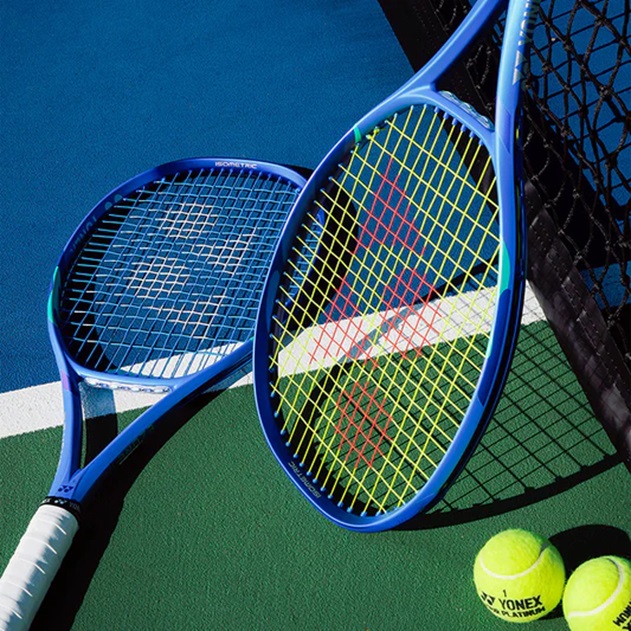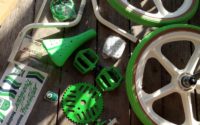Tennis Gear Upgrades: What to Replace, Why and When
Upgrading your tennis gear can make your time on the court feel a lot better. If your strings aren’t responding like they used to, grip feels worn, or your shoes don’t offer the same support, it might be time to swap a few things out. Knowing what to replace, why it matters, and when to do it helps you stay comfortable and focused during each match. It’s not about chasing the latest trends—it’s about keeping your gear in shape so it works with you, not against you.
Strings

Strings play a huge role in how your shots feel, from power and control to spin and comfort. Over time, they lose tension, get worn or frayed, which can affect your performance more than you might realise. That’s why it’s best to shop for new tennis racquets strings as soon as you notice your game isn’t quite the same.
A noticeable drop in tension is one of the easiest ways to tell your strings need replacing. If your shots feel less crisp, or the ball doesn’t jump off the racquet like it used to, your strings are probably too loose. Frayed or broken strings are an obvious clue, but even if they look fine, the strings might have lost their responsiveness. Another sign is discomfort or arm fatigue during or after playing — old strings can cause extra vibration, increasing the risk of injury.
Replacing tennis racquets strings regularly keeps your racquet feeling lively and consistent, so you can trust your shots no matter the match. How often you restring depends on your playing style, how often you play, and the string type. A simple rule is to restring your racquet as many times a year as you play each week. For example, if you play twice a week, you should do it roughly every six months.
When choosing new tennis strings, you should consider what suits your style and needs. Polyester strings are durable and great for spin, but they can be harsh on the arm. Multifilament or natural gut strings provide more comfort and power, but they don’t last as long.
If you’re uncertain, think about mixing types—hybrid string setups can balance durability and feel. Keeping your strings fresh sharpens your game, cleans your shots, and keeps your arm happier. So don’t wait — buy new tennis racquet strings as soon as you notice a difference.
Racquet
Your racquet frame takes a lot of impact, even without string damage. Over time, you might notice small cracks, chips, or even a softer feel on contact. These are signs your racquet’s losing its stiffness and strength. If you play regularly, it’s imperative to take good care of the racquet. Also, consider replacing it every 1 to 2 years. A worn frame can reduce power, control, and comfort, especially during fast rallies. Keep an eye on how it feels during play. If your shots aren’t landing the way they used to or the frame looks tired, it might be time for an upgrade that better suits your current playing style.
Shoes

Tennis shoes typically need replacing every 45–60 hours of play, but different models have different lifespans. If you play once a week for an hour, that’s about once a year. But if you’re on court more often or play aggressively, you may need new shoes every few months. Signs it’s time include worn-out traction (your shoes no longer squeak on hard courts), increased foot or ankle soreness, or a loss of support and cushioning. Even if the outsole looks good, the midsole may be worn down, reducing shock absorption and increasing risk of injury.
Overgrip
Overgrips wear out faster than you might think, especially if you play often or sweat a lot. The grip is your direct connection to the racquet—it’s where you feel spin, power, and control. Once it loses that tacky feel, your racquet can slip mid-shot, affecting precision and comfort. If it feels smooth, slippery, or worn, it’s time for a new one. Some players change theirs weekly, especially in summer. Others might get a few weeks or more, depending on playtime and care. Storing your racquet can help, but once the grip feels off, swap it for a fresh one.
Tennis Balls
Tennis balls don’t last forever—even if you’re playing for fun. If your ball looks faded, the rubber’s cracking, or the bounce feels off, it’s probably time to replace it. Pressurised balls are the most common and usually last 1 to 4 weeks for recreational players, depending on how often you play. Hard courts wear them down faster, while clay courts are a bit gentler. If you’re using pressureless balls for practice, those tend to last longer. But once a ball feels flat or doesn’t bounce properly, it can mess with your rhythm—fresh balls help keep your game feeling right.
Apparel

Tennis apparel doesn’t have a set expiry date—it comes down to personal comfort and how often you play. If your clothes feel too tight, stretched out, or don’t breathe well anymore, it might be time for an update. Look for signs like fading fabric, worn seams, or tops that no longer stay in place during rallies. If your gear starts feeling uncomfortable or distracting mid-match, that’s a good sign it’s time for an upgrade. When updating your apparel, opt for moisture-wicking materials; they are ideal for staying cool and dry. You should also prioritise freedom of movement and support, especially with tops, skirts or shorts.



